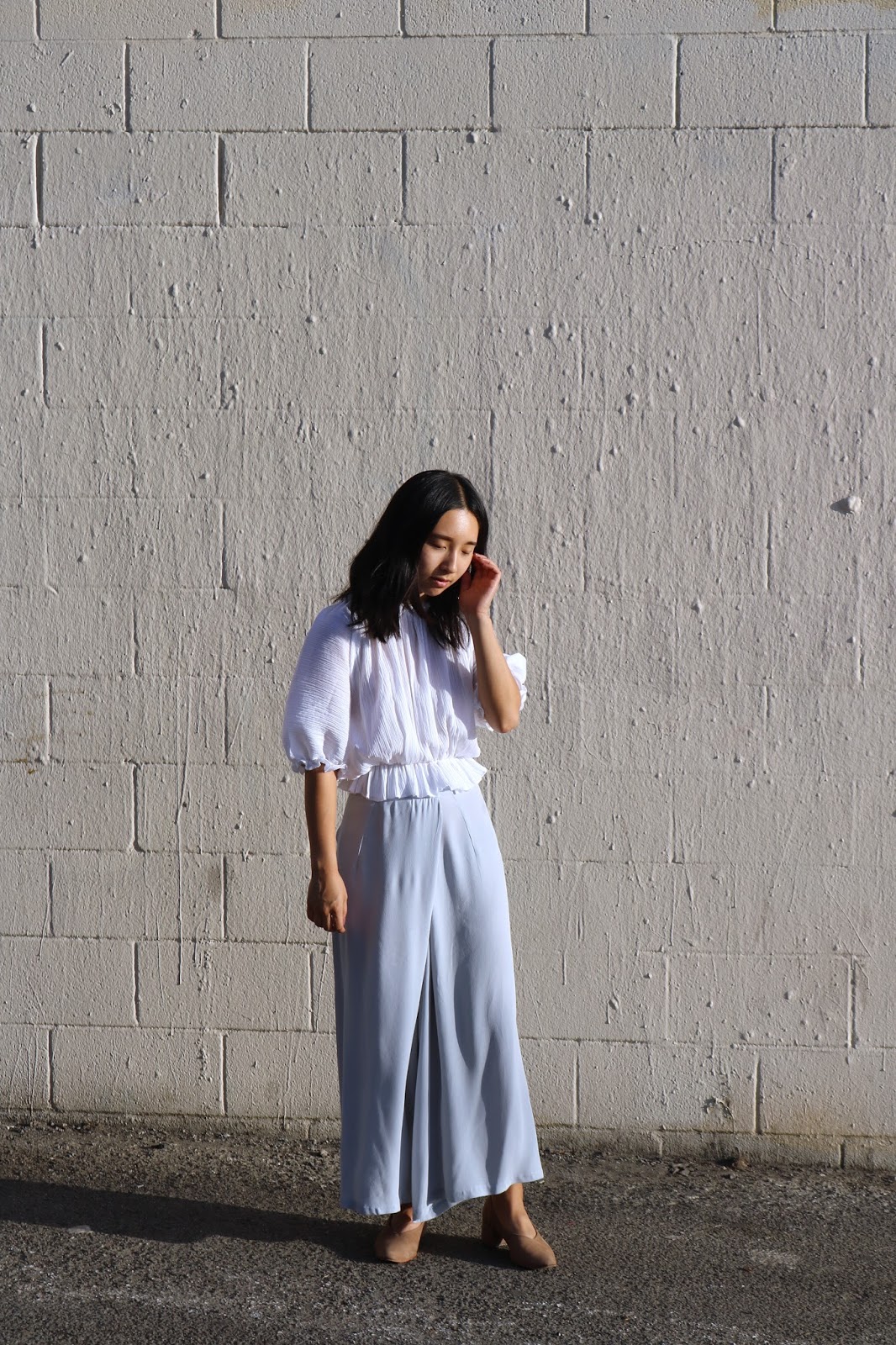SLOW SERIES
-Part I-
The Process of Making a Garment.
Today my story will be a bit different. I recently took a walk to the mall and went into several stores only to be disappointed in the fabric and quality of the clothes offered. Just prior to this visit, my friend Jacci, who doesn't work in the fashion industry, asked for a few slow fashion brands she could shop. From these two incidences, it sparked in me that I wanted to share this information. Thinking about it, if I wasn't studying and working in fashion, I probably wouldn't know as much about slow fashion as I do now. I decided to write up the knowledge that I have, but during the process I found that there were several areas I wanted to touch upon that would be much too long for one post. Because of this, I will be creating a series on slow fashion touching on different topics each week. I also asked on Instagram if anyone had any questions about slow fashion and will be answering them either today or in a future post.
To begin, I thought it would be good to lay down the foundation of the process of making clothes. Before I entered the fashion industry, I really didn’t know how clothes were made. I’d taken a few sewing classes prior and made a few dresses, but making clothes for consumers is a whole different process. The process that I will explain is from my perspective of working in a small business where each person wears many hats, meaning we typically do more than one appointed job. Also since I only recently started studying fashion design, there are still many areas that are unfamiliar to me but I will share as much as I know.
To start creating a garment, designers research what to create. This process of researching may include inspirational activities such as traveling, viewing art, listening to music, studying what people are wearing in public, meeting new people, combing through thrift stores, etc. After this, they sketch pieces they want to create. This sketch is initially done in pencil and then drawn on the computer using Adobe Illustrator. There will be a period of time where the designs are thought over to make sure they make sense and that they are catered to the specific audience of the brand. When necessary, edits will be made to the computer drawings and from my experience, it takes several weeks for pieces to be finalized.
After the design process, the sketches are handed over to the pattern maker. They are the people who create a paper version of what clothes would be if they were completely unstitched and flattened. Accurate measurements are very important for the fit of the garment. They also need to make specific marks on each pattern piece in order to communicate well with the sewer. A sample piece will then be sewn and fitted on a model to ensure that it fits well and looks the way it was designed to.
I am not as familiar with grading and marking but from what I understand, a grader creates a range of sizes from the sample size paper pattern handed over from the pattern maker. A marker arranges the pattern pieces in a way that maximizes the available fabric before cutting. The marker, which is similar to a stencil, is given to the cutter to cut the fabric along the lines of the marker. The cut out pieces are then given to the sewers to be made into actual garments.
Depending on the fabric, certain garments may need to be washed to soften the material or in the case of jeans, need to go through a specific wash treatment. After, trims such as buttons and labels are added onto the garment. Lastly, they are inspected, snipped of any loose threads, and packaged to be shipped.
After sharing this process, I feel that I can better explain to you what fast and slow fashion are. Fast fashion is creating clothes in the fastest manner possible in order to reach the consumer with the latest trends on the runway. This would mean that each person in the process above would do their work at an expedited rate that is unnatural for humans. It is important to respect each person's creative gift in this process, which also means accepting that it takes time to create. This brings me to slow fashion. Slow fashion is taking the time to go through this creative process which often accompanies using environmentally friendly fabrics and processes to create clothes. To avoid making this post too long, I will expand on the latter in the next part of this series.
ANNIKA DEBOER'S STORY: Annika, inspired by mindful consumption and long-lasting garments, started her brand of ethical women's wear in 2017. She creates small collections and the construction of her clothing is slow in order to focus on the quality of the pieces she creates and to reduce excess. All of her pieces are made to order and cut and sewn in New Zealand. She hopes that in the time awaiting a garment, her customers will appreciate the craftsmanship it takes to create garments and treasure it when it arrives.





No comments:
Post a Comment